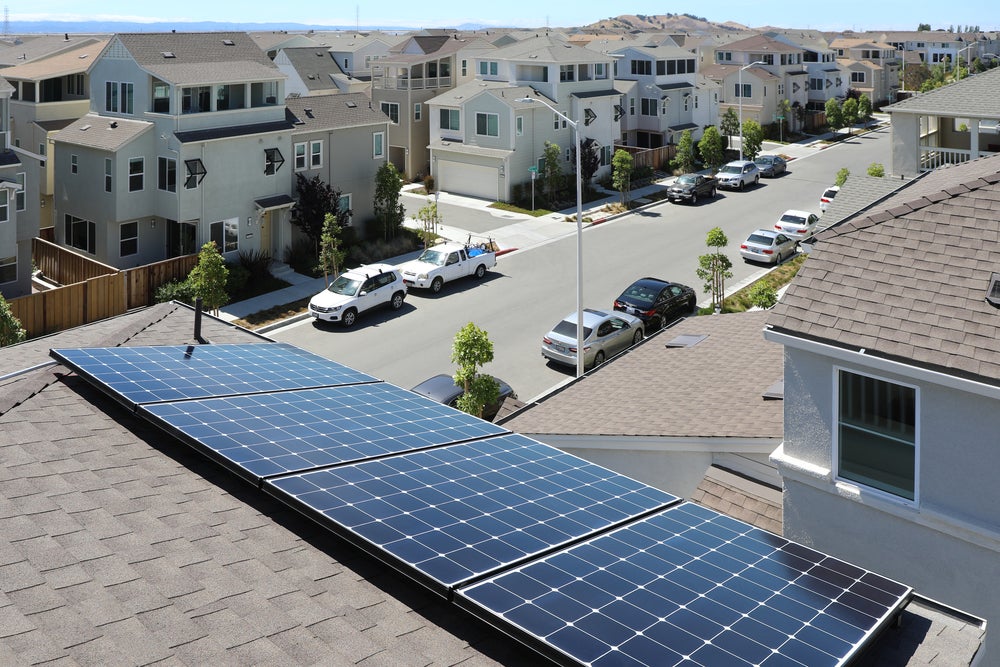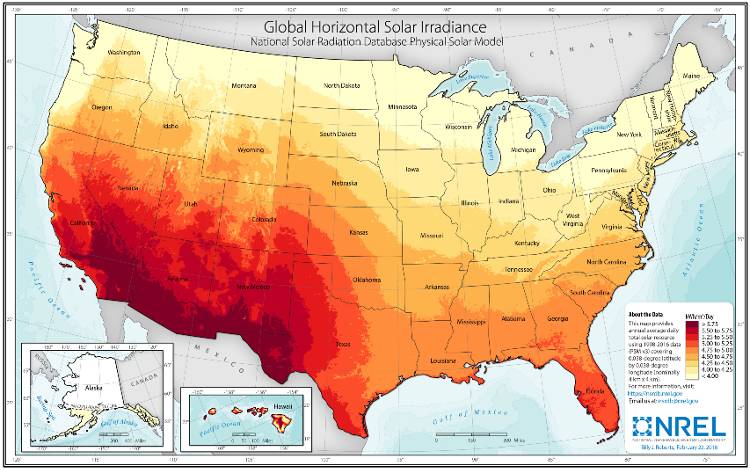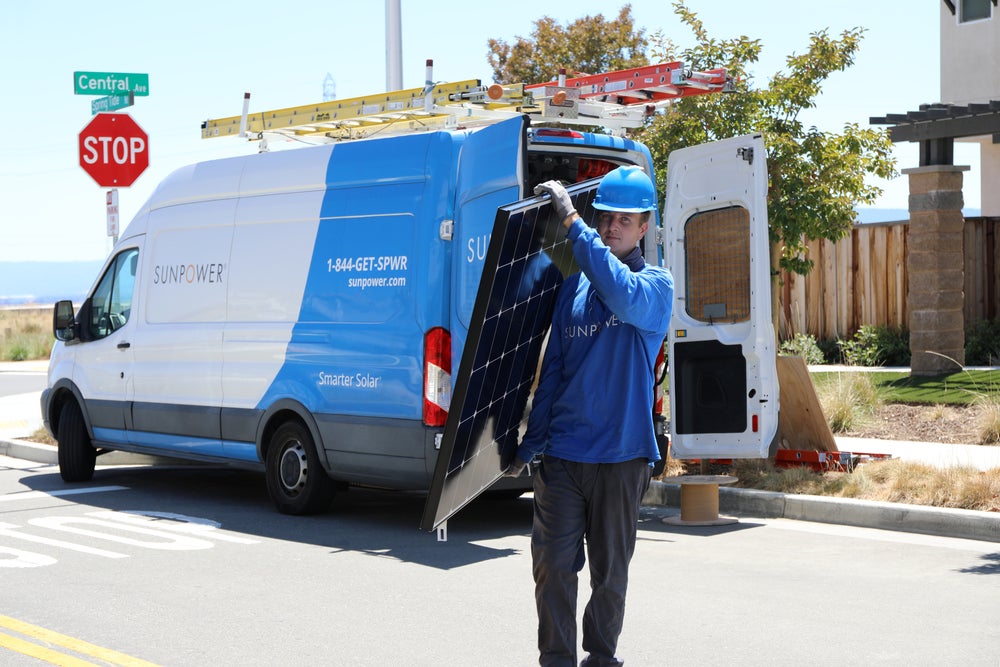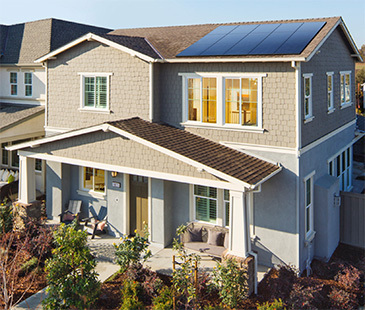How Many Solar Panels Do You Need?
How many solar panels does the average house need? How many solar panels do I need for a 3-bedroom house? How many solar panels do I need for a 2000 sq. ft. home? These are all common questions for an aspiring solar homeowner. Determining how many solar panels you’ll need for your home requires first knowing what your goals are.
Do you want to minimize your carbon footprint? Maximize the return on your investment? Save as much money as possible?
Most people want to save money while minimizing their environmental impact.
How many solar panels do you need?
To calculate how many solar panels you need, you need to understand:
Your home's average energy requirements
Your current energy use in kilowatt-hours (kWh)
The climate and amount of sunlight in your area
The efficiency of the solar panels you’re considering
The physical size of the solar panels you’re considering
One simple way of answering the “How many solar panels do I need” question is to consult a professional solar installer, who can give you a free home solar evaluation.
How much solar power will you need?
To determine your home’s average energy requirements, look at past utility bills. You can calculate how many solar panels you need by multiplying your household’s hourly energy requirement by the peak sunlight hours for your area and dividing that by a panel’s wattage. Use a low-wattage (150 W) and high-wattage (370 W) example to establish a range (ex: 17-42 panels to generate 11,000 kWh/year). Note that the size of your roof and how much sunlight your roof gets are factors as well.

How many watts do you currently use?
Look at your electricity bill for average usage. Look for “Kilowatt Hours (or kWh) Used” or something similar, and then note the length of time represented (usually 30 days). If your bill doesn’t show kilowatt hours used, look for beginning and ending meter readings and subtract the previous reading from the most recent one.
You want daily and hourly usage for our calculations, so if your bill doesn’t show a daily average, just divide the monthly or annual average by 30 or 365 days, respectively, and then divide again by 24 to determine your hourly average electricity usage. Your answer will be in kW. (And just in case you’re wondering, a kilowatt-hour is how much power you are using at any given time multiplied by the total time the power is being used.)
A small home in a temperate climate might use something like 200 kWh per month, and a larger home in the south where air conditioners account for the largest portion of home energy usage might use 2,000 kWh or more. The average U.S. home uses about 900 kWh per month according to the EIA. So that’s 30 kWh per day or 1.25 kWh per hour.
Your average daily energy usage is your target daily average to calculate your solar needs. That’s the number of kilowatt-hours you need your solar system to produce if you want to cover most if not all of your electricity needs.
It’s important to note that solar panels don’t operate at maximum efficiency 24 hours a day.
Weather conditions, for example, can temporarily reduce your system’s efficiency. Therefore, experts recommend adding a 25 percent “cushion” to your target daily average to ensure you can generate all the clean energy you need.
For more information on that topic you can read our Solar 101 article: What is Solar Energy and How Do Solar Panels Work?
How many hours of sunlight can you expect in your area?
The peak sunlight hours for your particular location will have a direct impact on the energy you can expect your home solar system to produce. For example, if you live in Phoenix you can expect to have a greater number of peak sunlight hours than if you lived in Seattle. That doesn’t mean a Seattle homeowner can’t go solar; it just means the homeowner would need more panels.
The National Renewable Energy Laboratory (NREL) provides sunlight information by state and for major cities.

Now multiply your hourly usage (see question No. 1) by 1,000 to convert your hourly power generation need to watts. Divide your average hourly wattage requirement by the number of daily peak sunlight hours for your area. This gives you the amount of energy your panels need to produce every hour. So the average U.S. home (900 kWh/month) in an area that gets five peak sunlight hours per day would need 6,000 watts.
What affects solar panel output efficiency?
Here’s where solar panel quality makes a difference. Not all solar panels are alike. Photovoltaic (PV) solar panels (most commonly used in residential installations) come in wattages ranging from about 150 watts to 370 watts per panel, depending on the panel size and efficiency (how well a panel is able to convert sunlight into energy), and on the cell technology.
For example, solar cells with no grid lines on the front (like SunPower® Maxeon® cells) absorb more sunlight than conventional cells and do not suffer from issues such as delamination (peeling). The construction of our cells makes them stronger and more resistant to cracking or corrosion. And a microinverter on each panel can optimize power conversion at the source, in contrast to one large inverter mounted on the side of the house.
Because of these wide variations in quality and efficiency, it’s difficult to generalize about which solar panels are right for you or how many you’ll need for your home. The main takeaway is that the more efficient the panels are, the more wattage they can produce, and the fewer you will need on your roof to get the same energy output. Conventional solar panels usually produce about 250 watts per panel, with varying levels of efficiency. In contrast, SunPower panels are known to be the most efficient solar panels on the market.*Based on datasheet review of websites of top 20 manufacturers per IHS, as of April 2021.
To figure out how many solar panels you need, divide your home’s hourly wattage requirement (see question No. 3) by the solar panels’ wattage to calculate the total number of panels you need.
So the average U.S. home in Dallas, Texas, would need about 25 conventional (250 W) solar panels or 17 SunPower (370 W) panels.
What is the effect of solar panel size?
If you have a small or unusually shaped roof, solar panel size and numbers are important considerations. With a large usable roof area, perhaps you can sacrifice some efficiency and buy larger panels (at a lower cost per panel) to get to your target energy output. But if your usable roof area is limited, or if it’s partially shaded, being able to use fewer smaller high-efficiency panels may be the best way to make the most possible power over the long term, ultimately saving you more money.
Solar panel dimensions
Typical residential solar panel dimensions today are about 65 inches by 39 inches, or 5.4 feet by 3.25 feet, with some variation among manufacturers. SunPower panels are 61.3 inches by 41.2 inches.
These dimensions have remained more or less unchanged for decades, but the efficiency and output from that same footprint have changed dramatically for the better. In addition, SunPower designs entire systems to have virtually no gaps between panels and uses invisible framing and mounting hardware to keep the rooftop footprint as tight, efficient, and attractive as possible.

How much do solar panels weigh?
If you’re planning on installing a rooftop solar system, understanding the weight of your solar panels is another key factor to consider. Knowing a solar panel’s weight is the best way to be certain that your roof can support a full installation.
While panel weights vary from brand to brand, most panels weigh about 40 pounds.
SunPower panels are the lightest of all major brands*Energy Sage, July 2021, https://news.energysage.com/average-solar-panel-size-weight/, with some of our panels weighing as little as 33 pounds. For comparison, at the top end of the range, some conventional panels weigh as much as 50 pounds.
Summary: How many panels do you need?
Knowing the answers to the above questions will give you an idea of the ideal number of panels for your electricity generation needs, or at least a realistic range. Next, a professional installer needs to assess your roof architecture, angle to the sun, and other factors to see if and how you’d be able to physically arrange the right number of panels on your roof to achieve your daily energy production goals.
You should also consider net metering as you’re considering how much money you’ll save and make from your solar system. Net metering is how your utility company credits you for producing excess solar energy when the sun is shining and then lets you draw from those credits when you’re using a conventional power grid at night if you don’t store your excess solar energy in a battery storage system.
Ready to learn more about saving with solar panels?
SunPower is changing the way our world is powered by making solar and storage more accessible to everyone. With nearly 40 years of dedicated solar experience, we're the top-rated U.S. solar company with over 15,000 five-star reviews.*Based on public solar providers in the U.S. Includes average of BBB, Yelp, ConsumerAffairs, BestCompany, Google, Solar Reviews and Energy Sage review scores as of 10/22/23. If you're considering installing solar panels, energy storage, or EV charging at your home, make sure you talk to SunPower.
Schedule your free, no-obligation consultation with SunPower by calling 1-800-SUNPOWER. Or click the Get Started button and we'll get in touch with you! Our team of Solar Advisors is here to help make your transition to a sustainable lifestyle.

